TVAS East Midlands: Excavations at Witchford, Cambridgshire
TVAS East Midlands: Excavations at Witchford, Cambridgshire
The excavation has revealed a settlement of Middle to Late Iron Age date with sporadic Roman activity afterwards. The settlement remains are indicated by numerous ditches and gullies which represent various property(?) boundaries, animal pens and enclosures. The most notable are curvilinear or ring gullies which demark individual house sites- a distinctive form of structure for the Iron Age. The settlement is overlain by ridge and furrow field system of medieval date.
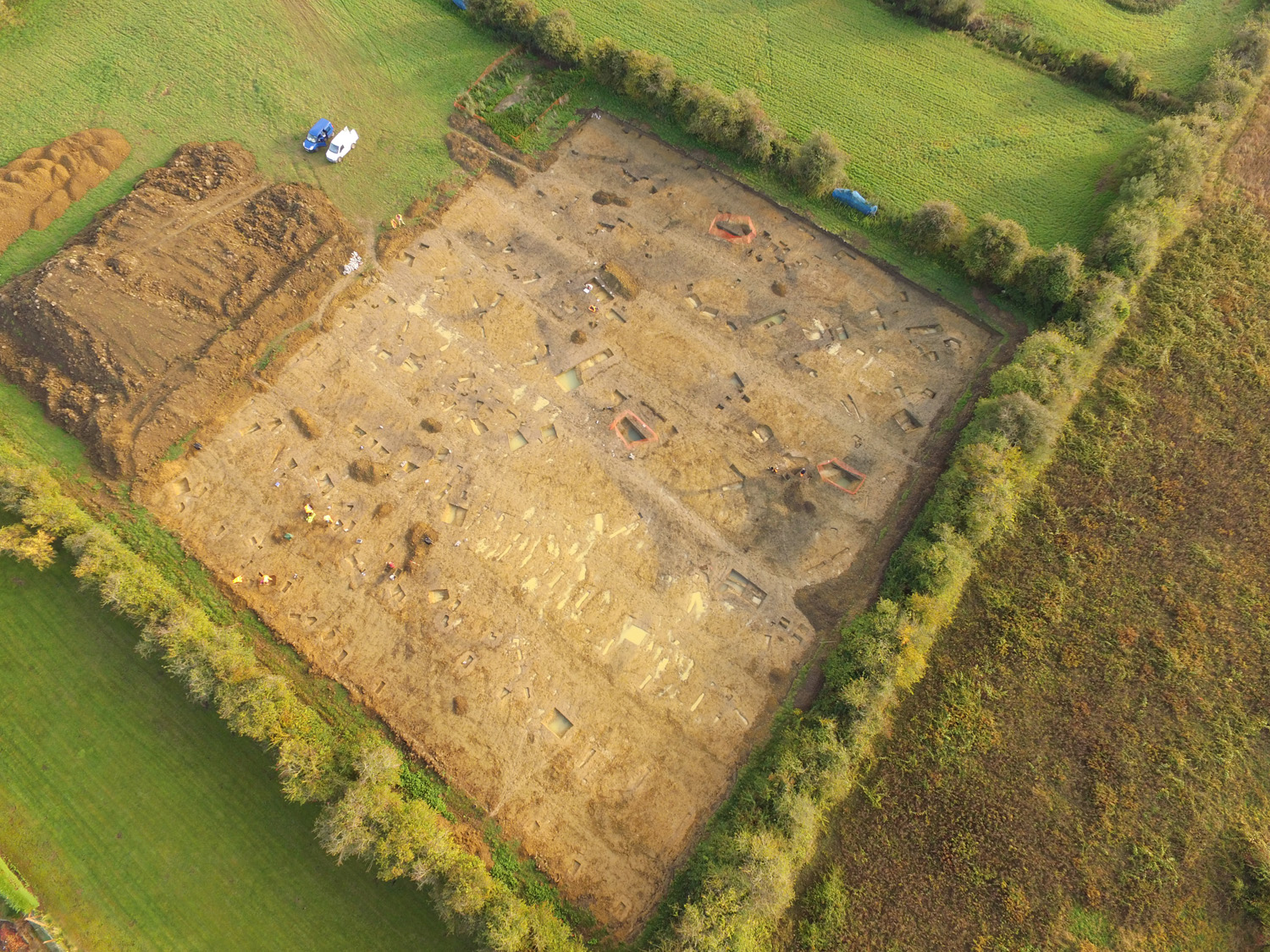
Above: The whole site showing the excavated features.
A number of metalwork items were found including a Roman coin and a brooch. The brooch, possibly of ?Hod Hill? (Dorset) type, can be dated to the first century AD, and has been associated with use by the Roman military.
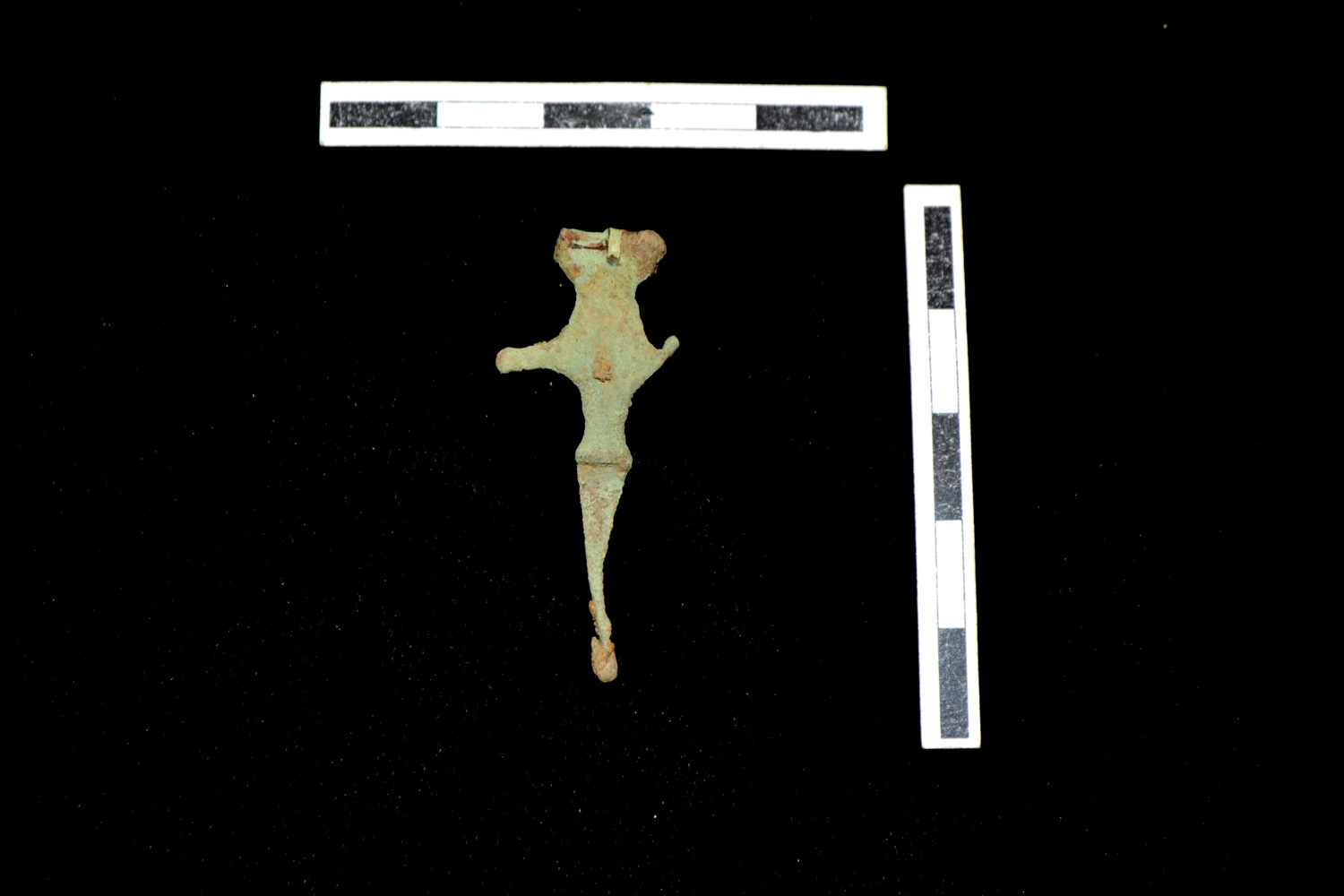
Above: Copper Alloy ‘Hod Hill’ style brooch.
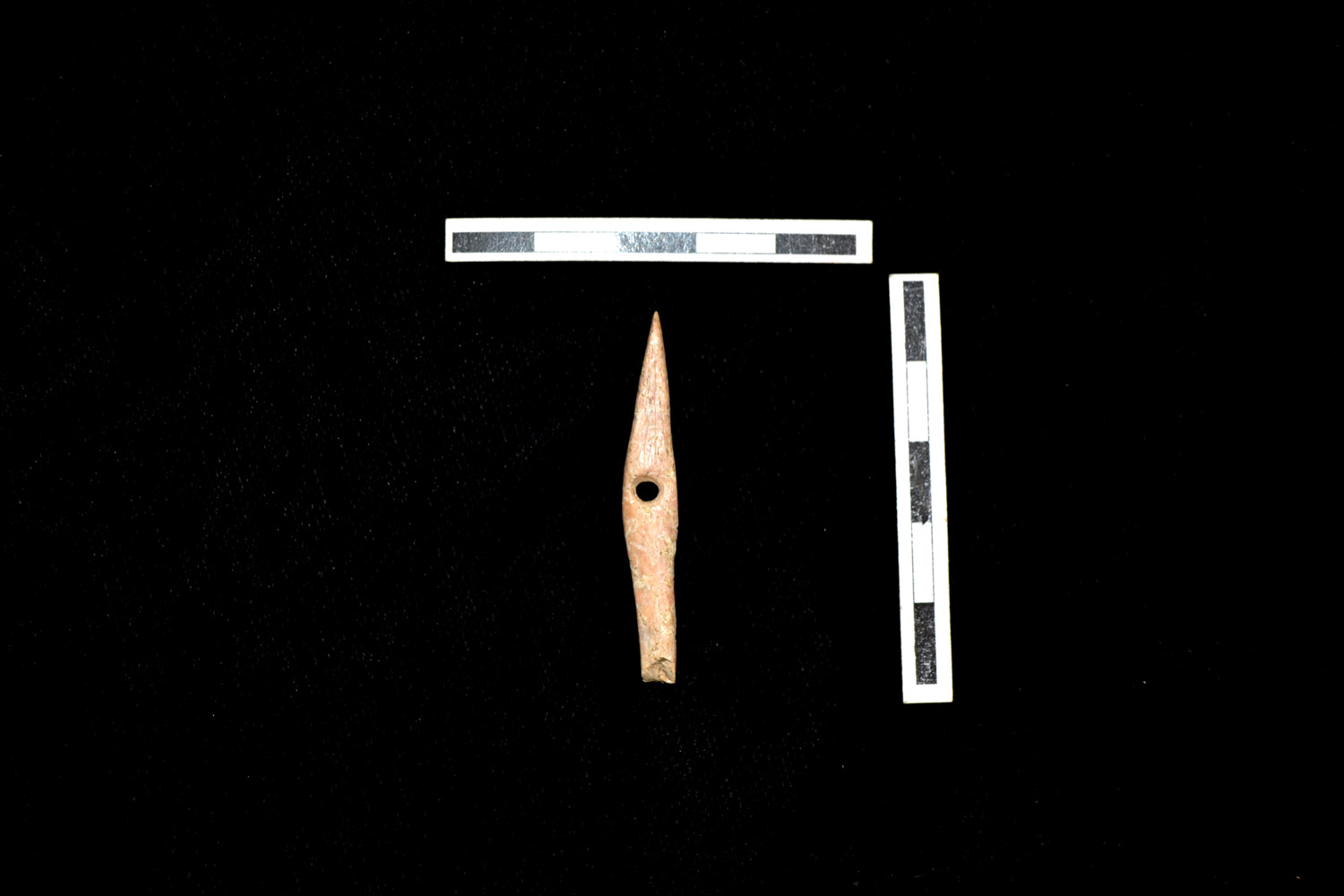
Above: Broken worked bone needle.
Human remains, including parts of a skull were unearthed from one of the ditches. Cemeteries and burials as we might think of them, rarely appear in the archaeological record for the Iron Age, so while the presence of human remains seemingly lying about in a ditch may seem peculiar or undignified to us, is not an uncommon observation for the time period.
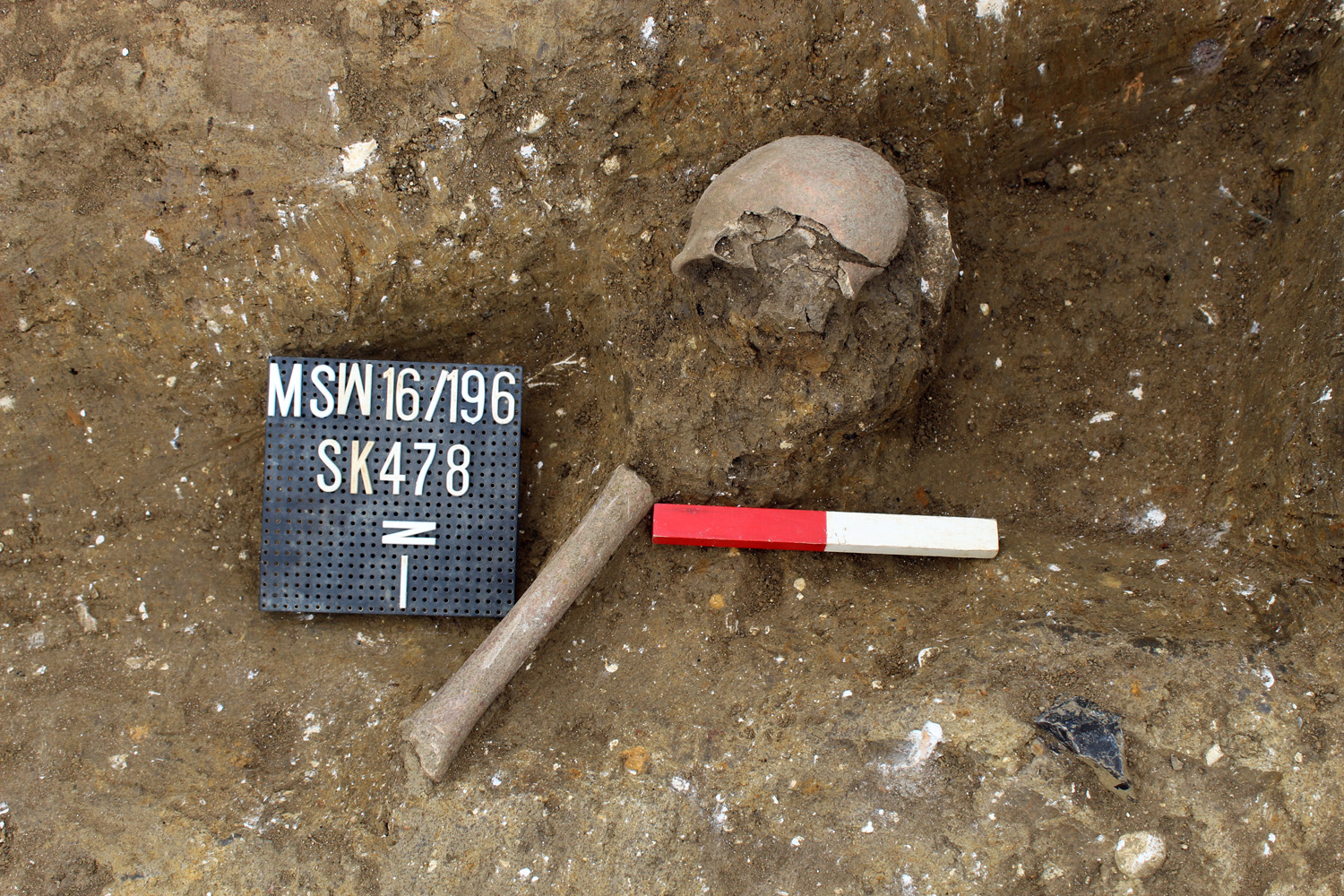
Above: Fragmented skeletal remains.
The hundreds of pottery sherds recovered have provided our dating evidence and suggest that we have a long-lived settlement probably ranging from as early as the 5th century BC through to the 1st century BC. After the site was abandoned it lay within an area farmed in Roman times and again in the medieval period.
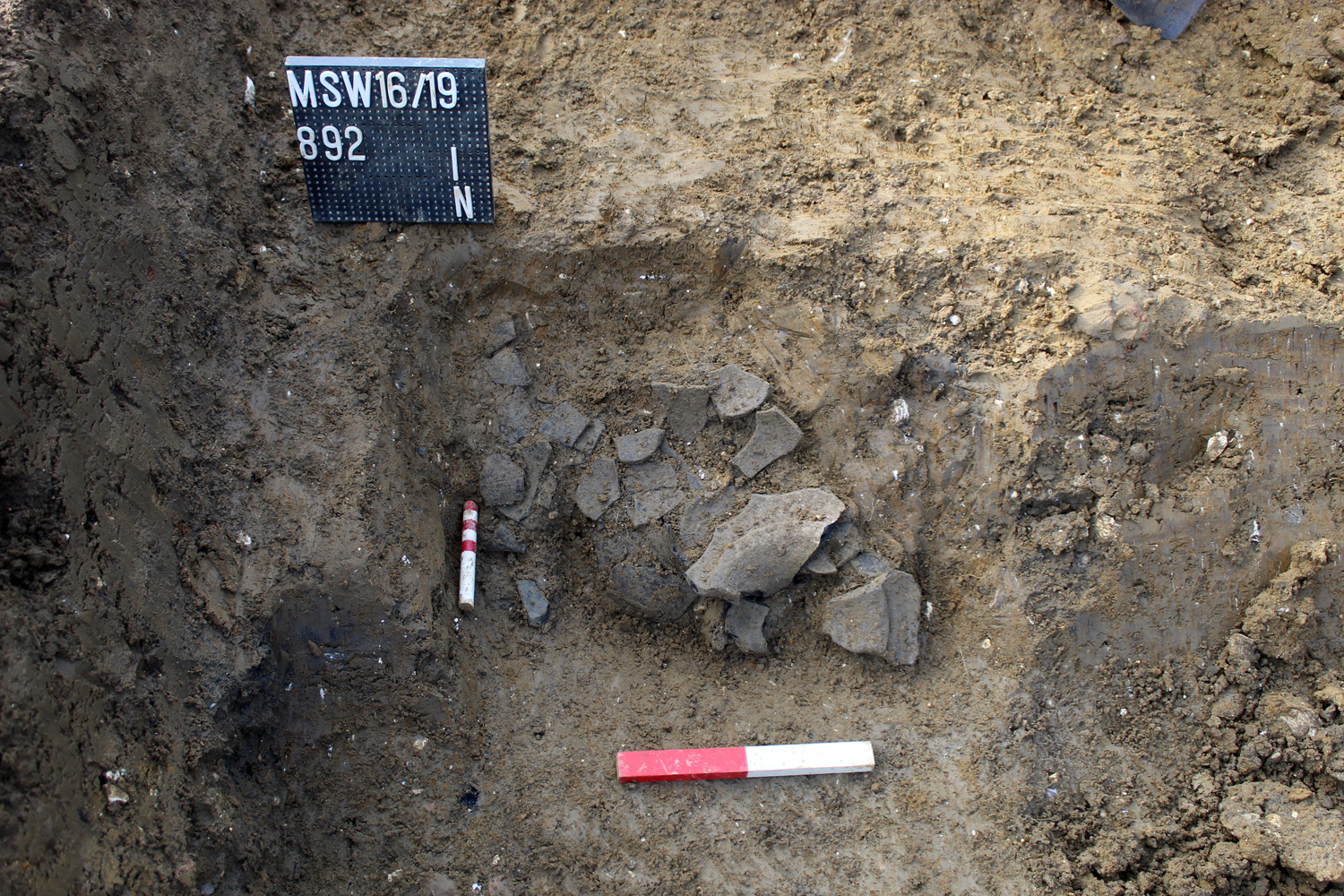
Above: Pots crushed post deposition.
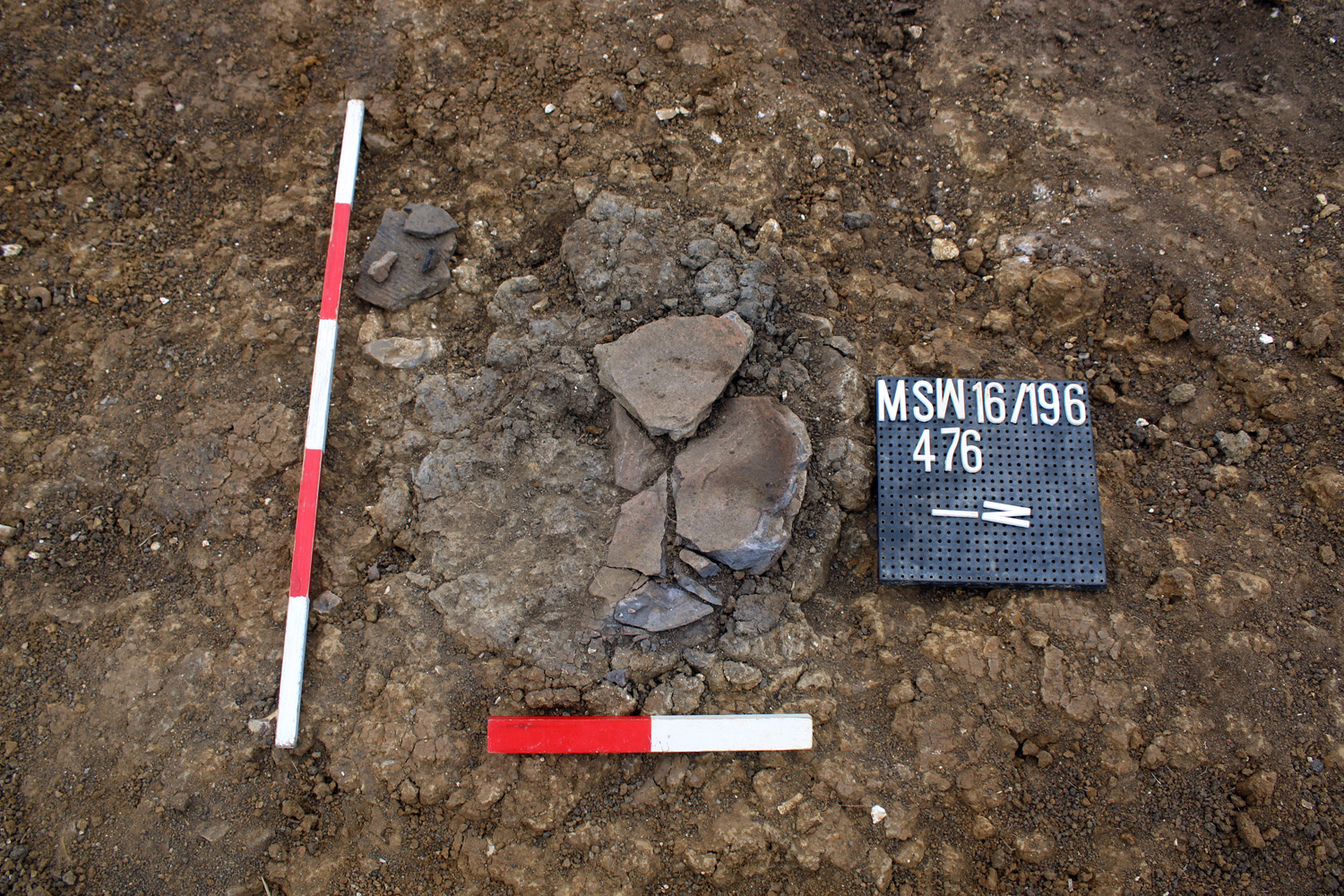
Above: Pots crushed post deposition.
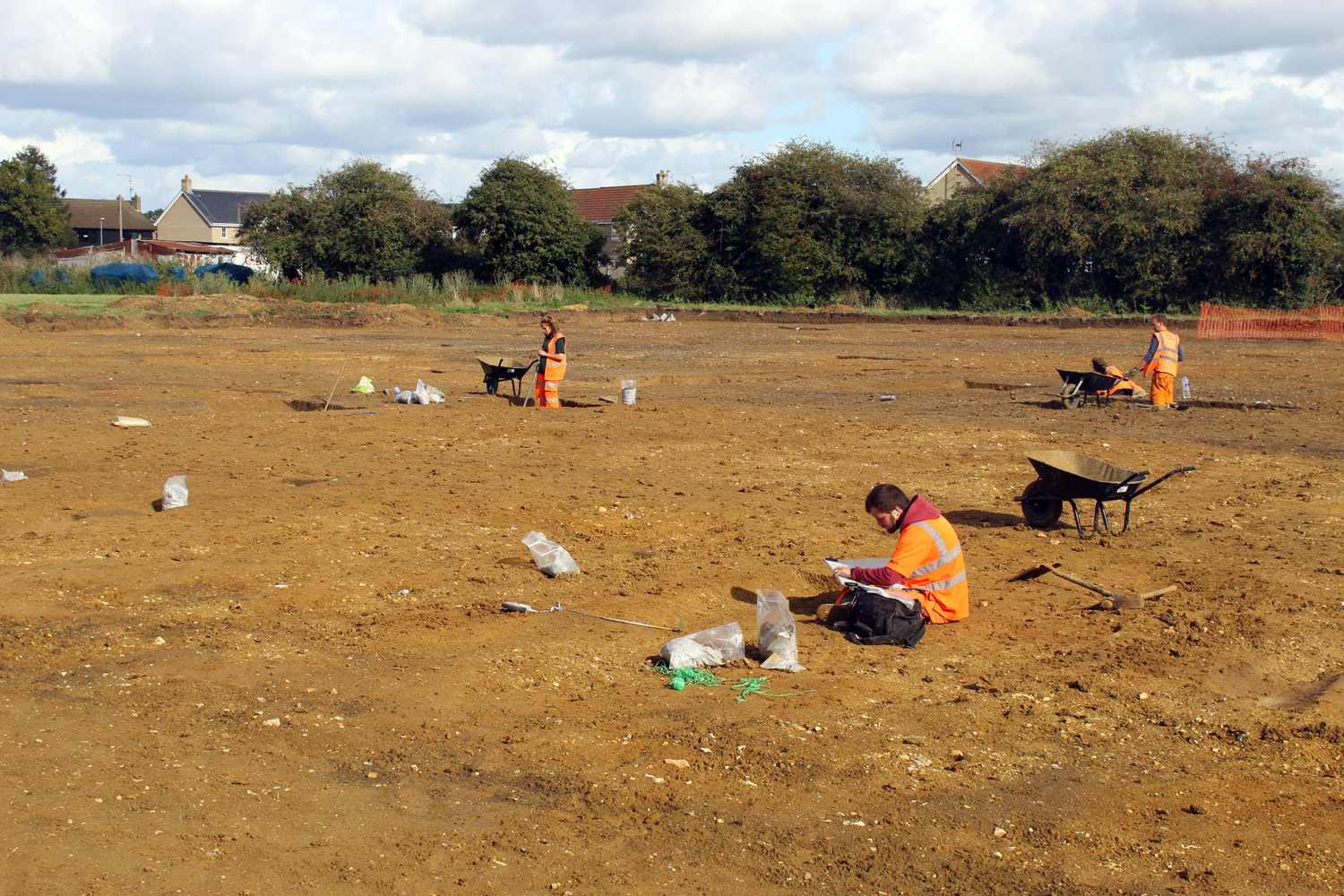
Above: Excavation in progress at Witchford.
